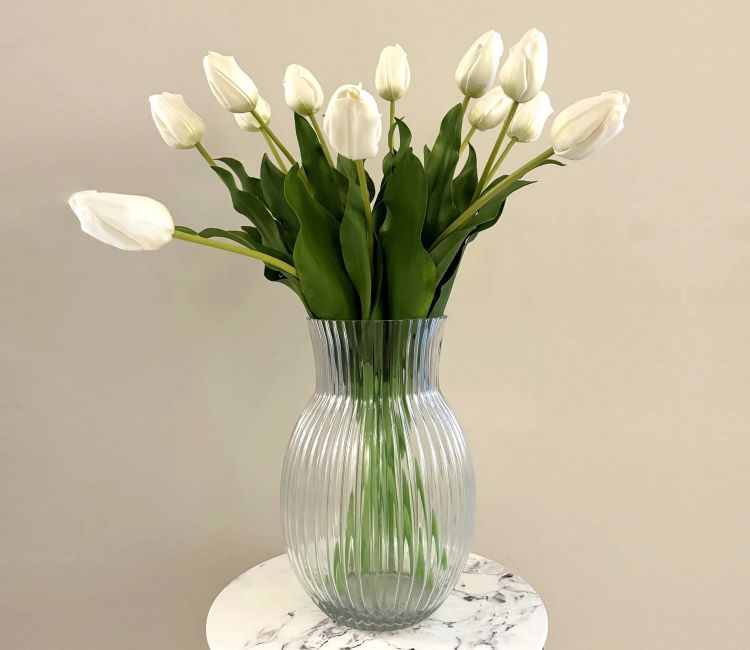The world is increasingly aware of the need for sustainability in every industry, including home décor. As environmental concerns grow, more people are opting for sustainable alternatives to traditional products, and one area where this shift is particularly evident is in the use of artificial flowers. Artificial flowers are no longer just a decorative option for those seeking low-maintenance beauty; they have become a key element in promoting eco-friendly design. With their long-lasting nature and the ability to reduce waste, artificial flowers are revolutionizing the home décor industry, offering a stylish and environmentally responsible choice for those who want to blend sustainability with elegance.
The Materials Behind Modern Artificial Flowers
The first step in understanding how artificial flowers contribute to sustainability is examining the materials used in their creation. Modern artificial flowers are made from a variety of high-quality, durable materials that are designed to mimic the natural beauty of fresh flowers. Common materials include silk, polyester, and polyethylene, each of which has its own environmental impact.
Silk Flowers: Silk is one of the most luxurious materials used for artificial flowers. While traditional silk production involves chemicals and processes that may not be the most eco-friendly, newer silk-like materials such as rayon are now being used, which have a lower environmental footprint.
Polyester Flowers: Polyester is widely used in artificial flowers due to its versatility and durability. Polyester flowers are often more affordable and can be designed with intricate details that closely resemble real blooms. While polyester itself is not biodegradable, many manufacturers are now focusing on creating more sustainable polyester options, such as recycled polyester, which helps reduce waste and reliance on virgin plastic.
Polyethylene Flowers: Some artificial flowers are made from polyethylene, which is more durable and resistant to fading. While polyethylene is a type of plastic, it has a longer lifespan and can be recycled, making it a more sustainable option when compared to single-use fresh flowers.
In addition to these materials, many artificial flowers are now made using eco-conscious techniques, such as water-based dyes and low-impact production processes, to further minimize their environmental footprint.
Longevity and Durability: The Environmental Advantage
One of the key ways artificial flowers contribute to sustainability is through their longevity. Unlike fresh flowers, which have a limited lifespan of a few days to a week, artificial flowers can last for years when properly cared for. This extended lifespan makes them a far more sustainable option for décor, as they do not need to be replaced frequently.
Fresh flowers, while beautiful, are typically discarded after a short time, resulting in significant waste. In fact, millions of flowers are grown, shipped, and sold every year, only to be thrown away once they have wilted. This not only wastes resources like water and energy but also contributes to the carbon footprint of the floral industry due to transportation and disposal.
On the other hand, artificial flowers, when chosen carefully for their quality and longevity, can become timeless décor pieces that require little to no maintenance. Their durability allows homeowners and event planners to reuse them for multiple occasions, reducing the need for new flowers to be purchased every season or event.
Reducing Waste with Artificial Flowers
Another major environmental benefit of artificial flowers is their role in waste reduction. Fresh flowers often end up as waste in landfills, contributing to organic waste and the associated methane emissions. By choosing artificial flowers, consumers can avoid this cycle of waste and make a more eco-conscious choice.
Moreover, the floriculture industry involves heavy use of pesticides, fertilizers, and water. The production and transportation of fresh flowers also leave a significant carbon footprint, especially when flowers are grown in one part of the world and shipped across the globe. Artificial flowers, particularly those made from recycled materials, help mitigate these issues by eliminating the need for constant replanting and reducing the environmental costs associated with growing, harvesting, and transporting fresh blooms.
The Growing Trend of Sustainability
As consumers become more informed about environmental issues, there is a growing trend toward sustainability in home décor. People are seeking out products that not only enhance their living spaces but also align with their values. This trend is evident in the increasing popularity of eco-friendly décor options, and artificial flowers fit perfectly into this movement.
In addition to their environmental benefits, artificial flowers offer endless design possibilities. They can be crafted to suit any aesthetic, from minimalistic modern homes to more traditional, luxurious settings. With artificial flowers, consumers no longer need to compromise on beauty for the sake of sustainability. They can have both—elegance that lasts, with minimal environmental impact.
Eco-Friendly Alternatives and the Future of Artificial Flowers
The future of artificial flowers is bright, with ongoing innovations aimed at making them even more sustainable. Many companies are investing in research to develop biodegradable or fully recyclable materials for artificial flowers. There are also efforts to create flowers made from repurposed or upcycled fabrics, which would further reduce waste and reliance on new resources.
As technology advances, we can expect even more eco-friendly alternatives to emerge in the artificial flower market. These innovations will continue to support the growing trend toward sustainability, offering consumers a wide range of options that combine style, durability, and environmental responsibility.
Conclusion
Artificial flowers have proven to be much more than a simple alternative to fresh flowers; they are a significant part of the movement toward more sustainable, eco-friendly home decor. With their longevity, minimal waste production, and use of innovative materials, artificial flowers provide an elegant, environmentally conscious solution for those seeking to reduce their environmental footprint while still enjoying the beauty of fresh blooms. As the demand for sustainability continues to rise, artificial flowers will remain a powerful tool in revolutionizing the way we approach home decor, providing both aesthetic appeal and environmental benefits for years to come.





Comments